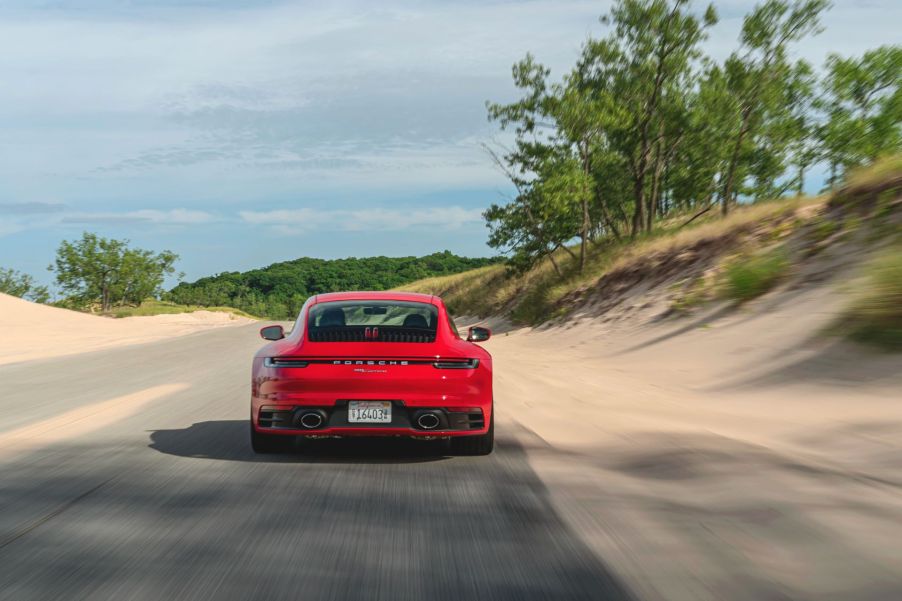
Subaru SUVs Use the Same Type of Engine as this Iconic Sports Car Maker
Rev up your Subaru Outback or Forester, and you’ll hear the growl of an engine style shared with one of the world’s most revered sports car makers. Subaru’s plucky SUVs and crossovers use engines similar to Porsche’s vaunted performance machines. That’s right – your humble Subaru Crosstrek has a kinship with your dentist’s Porsche 911 Carrera.
Porsche and Subaru both use boxer engines (and technically Toyota, too)

Subaru and Porsche both employ what are known as boxer engines – aka flat engines. Porsche has been using this engine style for well over 50 years in famous sports cars like the 911, 914, and Boxster. Ferdinand Porsche himself helped develop Boxer engines for the Volkswagen Beetle even earlier (although Volkswagen no longer uses flat-configuration engines today).
According to The Drive, Subaru’s boxer engine era began in 1970 and has continued until today. The manufacturer has put flat-four and flat-six engines in everything from its Outback family wagon to its high-performance, rally-inspired STI models.
What is a boxer engine?
Boxer engines differ significantly from typical v or inline configuration engines. Rather than angled or upright, inline cylinders, boxers use a flat configuration with cylinders that are horizontally opposed to one another. Whether it’s a four, six, or even 12-cylinder engine, you’ll see even cylinder numbers on each side with individual cylinders firing in the direction of its counterpart on the other side.
The result for these flat engines is a lower center of gravity than other types of engines. This characteristic can help with handling and stability. Boxer engines also have the advantage of each cylinder directly counteracting the movement of its opposite cylinder. This process cancels out vibrations found in less balanced engine designs. Although, some non-boxer, flat-configuration engines don’t have this effect (we’re looking at you, Ferrari Testarossa). But that’s a topic for another day.
Which new Porsche and Subaru vehicles use boxer engines?

Both Subaru and Porsche continue to use boxer engines today.
Subaru’s entire model lineup outside the Solterra EV uses variations of its boxer engine design. Whether you’re getting a 2023 Ascent or a 2023 Impreza, you’ll find a flat-four of some kind under the hood. In fact, Subaru even shares one of its flat-four engines with another Japanese manufacturer. The Subaru BRZ and Toyota 86 don’t just look similar – they share the same platform and the same 2.4-liter boxer engine. As a result, Toyota technically gets the distinction of being the third modern mass-production manufacturer that offers a boxer.
Porsche doesn’t use boxer engines in all its models. But its flagship 911 and sibling 718 stick to the old flat-configuration formula. A range of turbocharged four-cylinder and six-cylinder options are available from the German automaker.
Are boxer engines good?
Just like any engine design, there are pros and cons to using boxer engines. While they have some substantial performance advantages, they also have some disadvantages to consider. On the one hand, these kinds of engines are very well-balanced and help handling with their lower center of gravity. On the other hand, they can sometimes come with mechanical compromises. For example, Subarus had engine problems for years with faulty head gaskets.
But perhaps the most important takeaway of the boxer engine style is the driving experience that goes with it. Whether it’s the signature grumble of a Subaru or the distinct growl of a Porsche, a boxer engine breaks away from the norm. It makes every drive a bit more memorable – even in your family station wagon.


